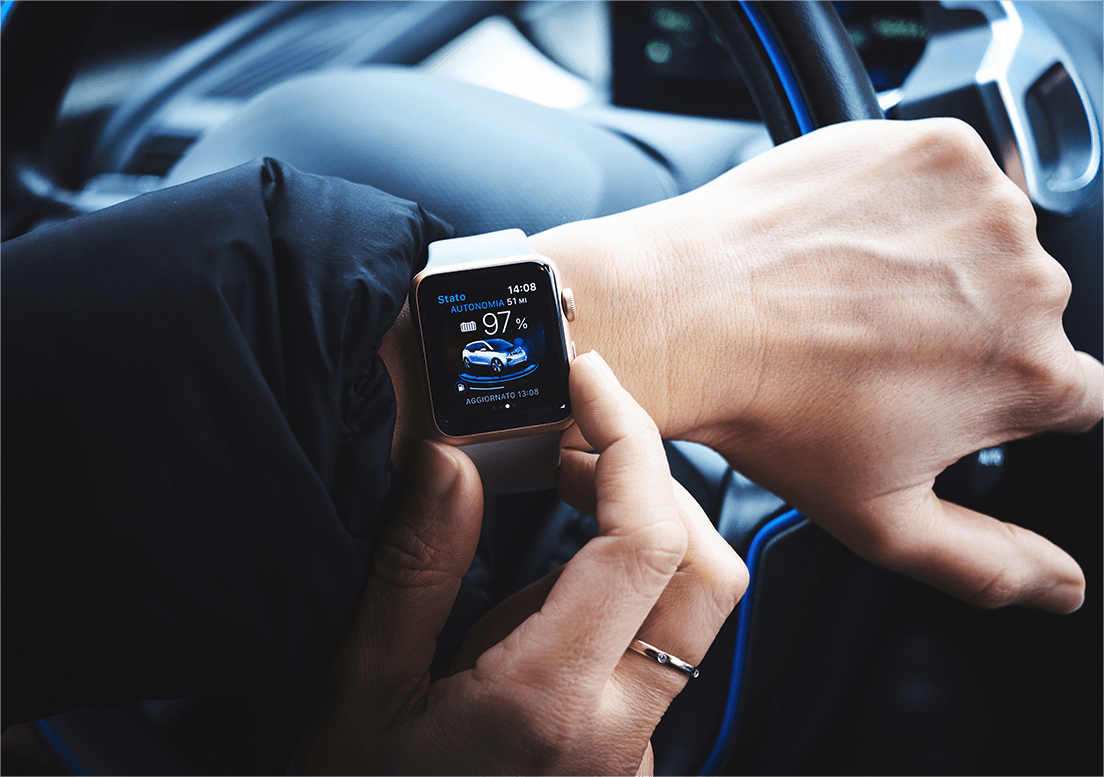
How to Develop an Augmented Reality App?
Some of you may consider the augmented reality as nothing but a bunch of useless words. Others may already be familiar with the term. However, only a few enthusiasts have a clear understanding of what augmented reality or AR for short really means.
Today, it has grown into a new trend on the mobile market. Numerous apps implement the revolutionary technology. For this reason, we decided to figure out what AR is about and how it can help to deploy your future app. How can it change the world? How can it be beneficiary from business perspectives?
Two Possible Paths to AR
If to define the term as simple as possible, augmented reality is a bridge between the real world and virtual realms. The technology is a good way to help us understand the surrounding world enriched with digital information including:
- GPS data;
- 3D models;
- Audio and graphics.
AR superimposes all these computer-generated inputs through the screen of our mobile devices, PCs, connected glasses and other modern gadgets.
The only question is how is it possible to create augmented reality? As a rule, developers opt for two major technologies based on different approaches:
- Marker-based AR - judging from the name of the technology, it becomes clear that this type is based on special markers. AR uses two types of markers including white and black. They act as traditional information activators when camera is focused on a particular object. Markers come in form of an image similar to a QR or 2D code. The codes contain all necessary data and direct the software when being sensed by a device. You have certainly come across marker-based AR in commercials and as especially when it comes to posters, brochures, catalogs, etc.;
- Sensor-based AR - this technology does not require any type of markers. It uses special sensors instead. They may include GPS sensors, in-built gyroscopes, compasses and other functional tools connected to the Internet. Once you want to see the surrounding world using AR, you only need to point your smartphone to a desired direction. AR will provide images and other possible media overlays.
Both technologies can be implemented in mobile apps. You need to choose the one according to the type of app as well as the field you are aimed at.
Who May Benefit from Augmented Reality Apps?
The first thing we need to do is to define what field may need AR technologies. Startups may chose from 5 major directions when defining purposes and goals for the future project. Today's available gadgets powered by AR are too expensive or complicated. Some devices were discontinued. On the other hand, both sensor and marker-based technologies may appear to be extremely hand when it comes to mobile applications. We have conducted a list of top industries for building an augmented reality app. The list may be not full. Feel free to think of your own field where you can implement AR technologies.
AR in Mobile Entertainment
AR is a great option for the mobile gaming industry. It is always fun. We have the example of Niantic, the company that gave a birth to Ingress game based on GPS augmented reality. The game is available for iOS and Android platforms and comes as a massive multiplayer available since 2012. If you want to take part in the gaming process, you only need to have a smartphone connected to Wi-Fi or with a stable mobile Internet connection.
The device should be equipped with camera and GPS feature. The main mission of the game is to capture portals you can find near historical monuments, buildings and other places around the borough. Your mobile device will let you find the spots and turn the game into an amazing interactive experience. Players can collaborate and play in teams. The mission is to find and capture as many portals as possible.
Pokemon GO is another great example of how AR can be beneficiary for the mobile gaming industry. The game appeared to be a real boom across the globe. It grew so popular that eventually managed to surpass Facebook when it comes to time users spent inside the application. Pokemon GO users were even more active if compared with Twitter users. The game has the same technology and uses smartphone's camera and sensors to place or find Pokemons in a real world around you.
Facebook reacted immediately and took some actions to implement AR technologies in order to stay in the trend. It appears that not only startups want their slice of the pie, but also well-established IT-brands and companies. The acquisition of AR-powered Masquerade startup does not look so strange now. According to the official Facebook representatives, it will help the company when it comes to enhancing users' video experience.
AR in Retail
Some developers refuse from traditional monetization strategies that consider in-app purchases, ad blocks and other typical ways to generate revenues. Some apps are simply not created for that. For this reason, application creators opt for physical goods instead. The retail industry can benefit a lot from augmented reality apps. Moreover, some brands have already started implementing the technology. IKEA and Lego are a good example of such brands. Both started using AR technologies and tool the fullest from them.
For instance, if you are eager to refresh the interior of your flat or house but do not have the slightest opportunity t visit the nearest IKEA store, you can take the advantage of company's owned technology that lets you visualize any piece of furniture without leaving your apartment. All you need is to download IKEA AR-powered application and get the paper version of the catalog with B&W markers inside. Then you need to place the catalogue in the space you want to refresh. Use the app to scan it and pick up a necessary piece of furniture. You will see the 3D model of the furniture on a necessary spot. The app helps people decide whether they need to buy a new piece of furniture or choose another one. IKEA's application delivers 100% realistic experience to its customers.
LEGO was another leading brand in its niche to implement AR technologies. The main mission was to stimulate more customers to visit their stores. For this reason, the company's developers created a photo application powered by augmented reality technology. The app contains pictures of all customers' favorite constructions, characters, vehicles, etc. Once you use the app to scan the image on a poster, you will see how your favorite Lego hero will grow in size standing right next to you. New characters are emerging every day due to the fact that the application is updated constantly.
AR in Beauty Industry
It seems like augmented reality was created specially for the beauty world. Both technology and industry are a perfect match. Some award-winning AR applications prove that fact.
L'Oreal has recently introduced its Makeup Genius application powered by AR. The product can boast several prestigious awards including the win at GLOMO Awards 2016. The main aim of the app is to let women choose from a variety of looks. All they need is to hold their smartphones like a mirror. They can try different makeup styles and choose the one that suits them most of all. Moreover, the app offers a selection of brand cosmetics to bring the idea of a chosen makeup to life.
Ink Hunter is another great example of the application powered by AR. If you still have doubts regarding a chosen image for a tattoo or if you hesitate where to place it, Ink Hunter will make a projection of the tattoo on any part of your body. You may see how it will look like n the end and decide whether it worth making. Unfortunately for all Android users, this amazing app is yet supported by iOS platform only.
AR in Tourism Industry
Would you like to know the history of a building, memorial, monument or street with just only pointing your smartphone at it? There is nothing easier! The mobile tourism industry has already been using AR technology to provide a better travelling experience. We have some good examples of mobile apps that has grown in popularity over the last few years.
Field Trip is the first AR-powered app we are going to speak about. Available for Android, it appears to be a vital tool every time you want to learn something new and interesting about a particular spot. Find out more about buildings' history, the most interesting and fascinating locations, etc. Every time you come across something interesting and worthy, you will see an image popping up. All you need is to set the most interesting and desired place and the app will inform you when you are approaching a given landmark.
Wikitude is another great app that uses augmented reality technologies. The app is available for both iOS ad Android and operates in a similar way to Field Trip. At the same time, Wikitude provides a wider least of features and options. For example, every time you feel hungry, you may enter the word "bar" in the app and raise your phone above the head so that its camera could scan the surroundings. If there is a bar next to you, the application will alert. Moreover, you will see the description of the venue in addition to reviews, images and other important information.
AR in Science
Adding AR to the science industry can have a mind-blowing effect. Here are some of the most popular and award-winning AR-powered products representing the science field.
Developed by Vito Technology, Star Walk is yet the best augmented reality application for those who want to explore the starry sky. The app is the best bet for those who are involved in astronomy and other sciences related to cosmos. The implemented technology uses special sensors to distinguish 200,000+ celestial bodies. You can generate all crucial information about any planet, star, satellite, asteroid or other object with only one tap.
Spacecraft 3D is a great app for both major mobile platforms including Android and iOS. If you are involved in spacecrafts and battle ships, you will have a chance to interact with their miniature models. They include some of the most popular and legendary spaceships that have ever explored the universe and Solar System. The facility projection can be activated via camera on your smartphone located on the level surface. You have a great chance to see Apollo 8 with your own eyes.
Summing Up
Augmented reality is certainly a trend to consider when it comes to mobile app development. For startups, it opens unlimited business opportunities, as the competition in this niche is yet less intensive than in other fields. On the other hand, the development process is tougher than ever. It requires exceptional programming and coding skills. It means that the only chance to bring your AR idea to life is to hire experienced development team. Our specialists have already dealt with creating AR-powered applications. They will handle your project as well.





